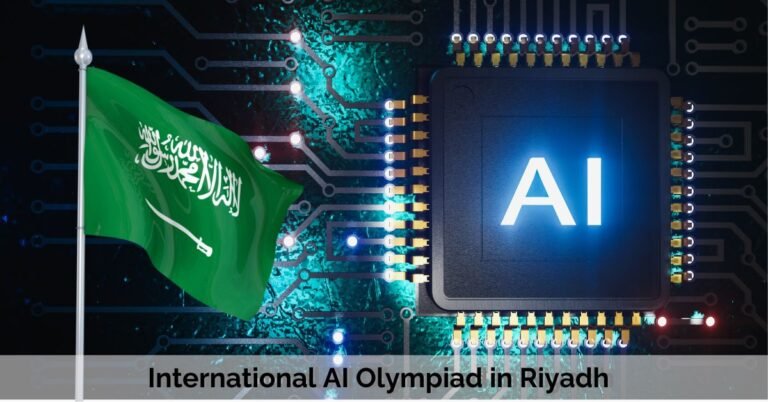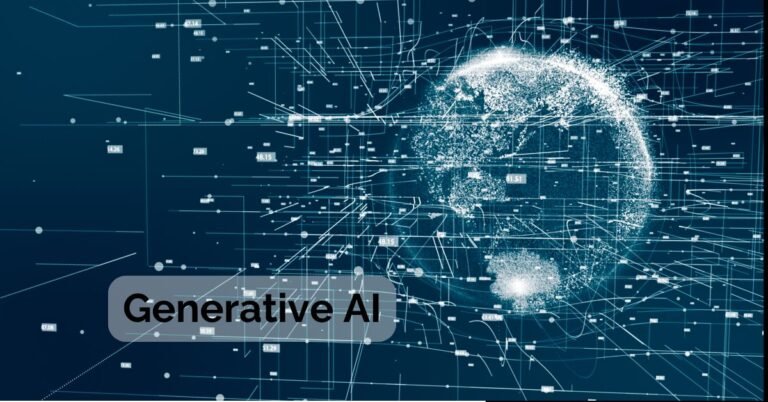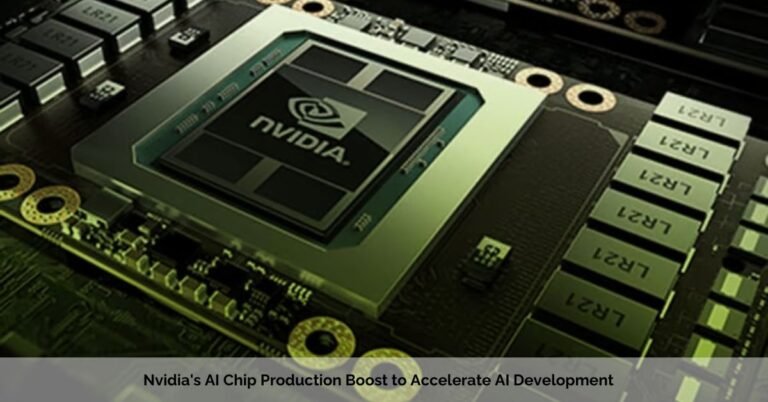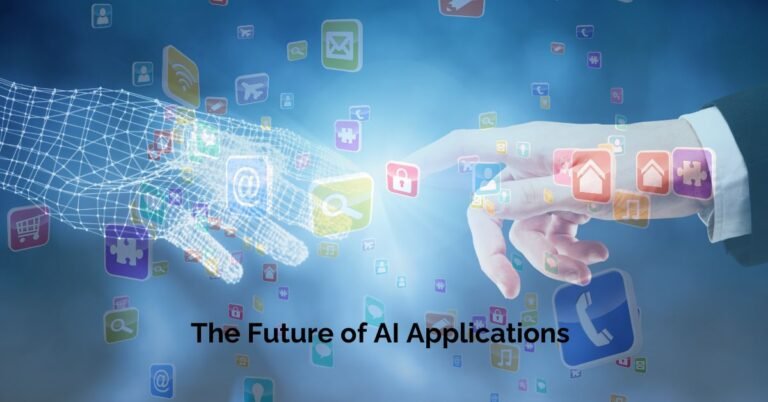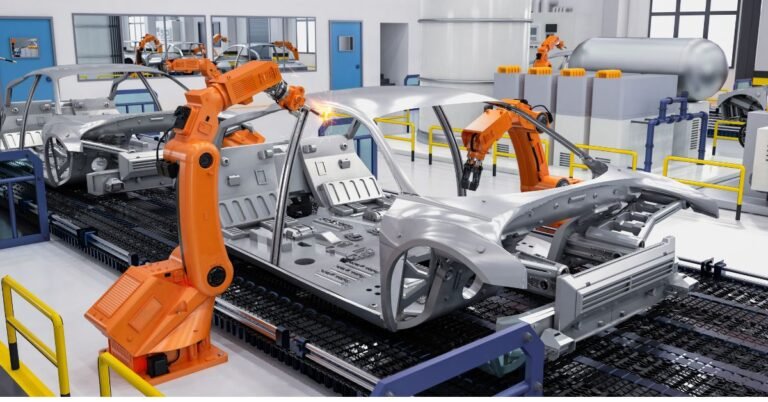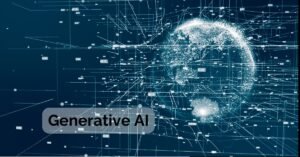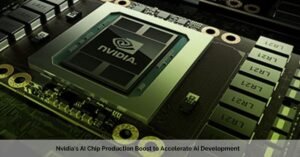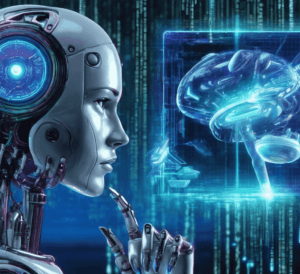What is Artificial General Intelligence (AGI)?
Artificial General Intelligence (AGI) stands as a pinnacle ambition in artificial intelligence, representing the pursuit of creating machines capable of exhibiting human-level intelligence. Unlike narrow AI, which focuses on specific tasks or domains, AGI aims to encompass a broad range of cognitive abilities, enabling it to tackle a broad spectrum of intellectual challenges.
Table of Contents
ToggleDefining AGI and Its Significance
AGI, often referred to as strong AI or full AI, envisions machines that can:
- Learn and adapt: AGI systems would continuously acquire knowledge and adapt to new situations like humans do.
- Reason and solve problems: AGI could reason, analyze, and solve problems independently without relying on human guidance.
- Exhibit creativity: AGI could demonstrate creativity by generating new ideas and solutions in various domains.
- Communicate and interact: AGI would be capable of natural language communication, allowing seamless human interaction.
The realization of AGI would mark a significant milestone in artificial intelligence with profound implications for society. AGI could revolutionize industries, enhance scientific discovery, and redefine the nature of human-machine interaction.
What is the difference between AI and AGI?
AI (Artificial Intelligence):
- Current reality: AI exists today in various forms, like self-driving cars, facial recognition software, and language models like me.
- Focus: AI specializes in specific tasks, excelling at analyzing data, recognizing patterns, and making accurate predictions within its defined domain.
- Capabilities: AI systems can learn from data, adapt to new situations, and improve performance over time. However, they lack general intelligence and struggle with tasks outside their programmed area of expertise.
- Think of it as: A skilled athlete, brilliant in their sport but unable to perform equally well in other disciplines. Read more
AGI (Artificial General Intelligence):
- Theoretical future: AGI is a hypothetical concept, representing a machine with human-level intelligence. It remains a research goal, not a tangible reality.
- Focus: AGI would possess the ability to learn, reason, understand, and adapt to any situation, just like a human. It wouldn’t be limited to specific tasks and could handle an open-ended range of challenges.
- Capabilities: AGI would encompass capabilities like common sense, creativity, and the ability to transfer knowledge between domains. It could understand emotions, form its own opinions, and learn from experience much like a human does.
- Think of it as: A Renaissance person, excelling in various fields and demonstrating true general intelligence.
Here’s a table summarizing the key differences:
| Feature | AI | AGI |
| Current status | Reality | Theoretical |
| Focus | Specific tasks | General intelligence |
| Capabilities | Learn, adapt, improve within domain | Learn, reason, understand, adapt to any situation |
| Limitations | Restricted to programmed area | Open-ended potential |
In simpler terms, AI is like a specialized tool, while AGI is the dream of creating a universal thinking machine. It’s important to remember that AGI remains a speculative concept, and achieving it might require breakthroughs in neuroscience, computer science, and philosophy.
Understanding Human Intelligence and Its Facets
Human intelligence is a complex and multifaceted concept, encompassing a wide range of cognitive abilities that enable us to learn, adapt, solve problems, and interact with the world around us. While there is no single definition of intelligence that is universally accepted, it is generally understood to involve the ability to:
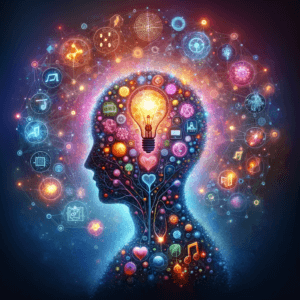
- Acquire and retain information: Humans possess the remarkable ability to absorb and store vast amounts of information, both through explicit learning and through incidental experiences. This ability forms the foundation for our understanding of the world and our capacity to solve problems.
- Think critically and analyse information: Intelligence involves acquiring knowledge and the ability to critically evaluate information, identify patterns, and make sound judgments. This ability allows us to discern fact from fiction, make informed decisions, and solve complex problems.
- Reason and solve problems: Humans are adept at applying their knowledge and reasoning skills to solve problems, whether they are simple puzzles or complex challenges. This problem-solving ability is essential for innovation, scientific discovery, and overcoming obstacles in daily life.
- Adapt to new situations and learn new things: Intelligence is not static; it is dynamic and allows us to adapt to new environments, learn new skills, and adjust to changing circumstances. This adaptability is crucial for survival and success in an ever-changing world.
- Communicate and interact with others: Human intelligence extends beyond individual cognition to encompass our ability to communicate and interact effectively. This ability allows us to share knowledge, collaborate on tasks, and form meaningful relationships.
Cognitive Abilities That Set Humans Apart
While many animals exhibit impressive cognitive abilities, humans possess unique cognitive skills that set us apart. These include:
- Abstract reasoning: Humans excel at abstract reasoning, the ability to think about concepts that are not directly related to physical objects or experiences. This ability allows us to develop complex theories, solve abstract problems, and engage in creative thought.
- Symbolic thought: Humans are capable of symbolic thought, the ability to represent objects, concepts, and relationships using symbols, such as words, images, or numbers. This ability allows us to communicate effectively, store and retrieve information efficiently, and engage in complex reasoning.
- Metacognition: Humans possess metacognition, the ability to reflect on our thinking processes and monitor our cognitive performance. This ability allows us to learn from our mistakes, develop effective strategies for learning and problem-solving, and regulate our cognitive activities.
- Creativity and innovation: Humans are remarkably creative and innovative, capable of generating new ideas, concepts, and solutions to problems. This creativity has driven human progress throughout history and continues to be a source of advancement in science, art, and technology.
The combination of these cognitive abilities has enabled humans to achieve remarkable feats throughout history, from developing complex civilizations to exploring the cosmos. As we continue to study and understand human intelligence, we gain a deeper appreciation for the unique capabilities that set us apart as a species.
Exploring the Potential of Artificial General Intelligence
The prospect of Artificial General Intelligence (AGI) has captured the imagination of scientists, philosophers, and science fiction writers for decades. While AGI remains a theoretical concept, its potential impact is profound, with the ability to transform industries, enhance scientific discovery, and redefine the nature of human-machine interaction.
Envisioning AGI’s Capabilities and Applications
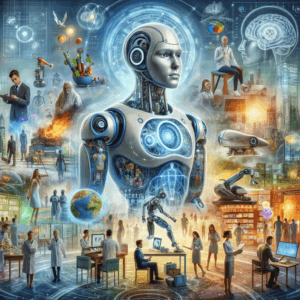
The capabilities of AGI would extend far beyond those of current narrow AI systems. AGI could:
- Learn and adapt continuously: AGI systems are not limited to pre-programmed tasks or datasets. They would continuously learn from their experiences, adapting to new situations and acquiring new knowledge without explicit instruction.
- Reason and solve problems independently: AGI could reason, analyze, and solve problems independently without relying on human guidance. They could identify patterns, make logical deductions, and devise creative solutions to complex challenges.
- Exhibit creativity and innovation: AGI could demonstrate creativity, generating new ideas and solutions in various domains. They could compose music, write poetry, design novel products, or develop groundbreaking scientific theories.
- Communicate and interact naturally: AGI would be capable of natural language communication, allowing seamless interaction with humans. They could understand human language nuances, engage in meaningful conversations, and collaborate effectively with humans in various tasks.
The potential applications of AGI are vast and transformative. AGI could revolutionize industries such as:
- Healthcare: AGI could assist in medical diagnosis, treatment planning, and drug discovery, leading to personalized and more effective healthcare.
- Education: AGI could provide personalized tutoring, adapt to individual learning styles, and create engaging educational experiences.
- Transportation: AGI could optimize traffic flow, develop autonomous vehicles, and revolutionize logistics and transportation systems.
- Science and technology: AGI could accelerate scientific discovery, generate new hypotheses, and design innovative technologies.
Impact of AGI on Various Industries and Society
The introduction of AGI would profoundly impact society as a whole. It would:
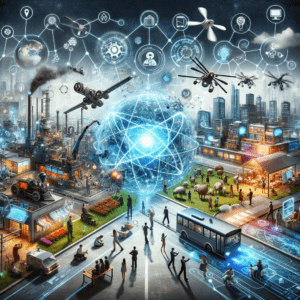
- Transform the nature of work: AGI could automate many tasks currently performed by humans, leading to significant changes in the workplace and the demand for different skills.
- Enhance economic productivity: AGI could drive economic growth by increasing productivity, automating repetitive tasks, and enabling innovations.
- Challenge social structures and norms: AGI could raise questions about the role of humans in society, the distribution of wealth and resources, and the ethical implications of artificial intelligence.
- Raise ethical concerns: AGI development and use must be carefully considered to ensure ethical alignment, safety, and accountability.
As we explore the potential of AGI, it is crucial to consider not only its transformative power but also its societal implications. By carefully examining the potential benefits and risks, we can ensure that AGI is developed and deployed responsibly for the betterment of humanity.
Current Approaches to Achieving Artificial General Intelligence
Pursuing Artificial General Intelligence (AGI) has captivated researchers and scientists for decades, driven by the potential to create machines capable of human-level intelligence. While AGI remains a theoretical concept, various research directions and methodologies are being explored to achieve this ambitious goal.
Different Research Directions and Methodologies
Several approaches are being pursued to develop AGI, each with strengths and potential limitations. Some of the key research directions include:
- Neurobiological Approach: This approach seeks to understand the human brain and its underlying neural mechanisms, aiming to replicate or emulate the brain’s architecture and processing capabilities in artificial systems.
- Symbolic AI Approach: This approach focuses on developing symbolic reasoning systems that can manipulate and reason about representations of knowledge, such as logical propositions or rules.
- Cognitive Science Approach: This approach draws on insights from cognitive science to develop models of human cognition, aiming to capture the mental processes and mechanisms that underlie human intelligence.
- Machine Learning Approach: This approach utilizes machine learning techniques, such as deep learning, to train AI systems on vast amounts of data, enabling them to learn patterns, adapt to new situations, and make predictions or decisions.
Challenges and Obstacles in Developing AGI
The development of AGI faces several significant challenges and obstacles:
- Understanding Human Intelligence: The human brain is an incredibly complex system, and fully understanding its mechanisms and the nature of human intelligence remains a significant challenge.
- Bridging the Gap Between Narrow AI and AGI: Narrow AI systems excel in specific tasks, but replicating the breadth and generality of human intelligence remains elusive.
- Enhancing Cognitive Abilities: Developing AGI requires replicating human cognitive abilities and enhancing them, such as enabling learning and adaptation beyond human capabilities.
- Ensuring Safety and Alignment: AGI systems with human-level intelligence must be carefully designed and controlled to ensure safety, prevent misuse, and align with human values.
Despite these challenges, the pursuit of AGI remains an active area of research, with ongoing advancements in various fields contributing to the understanding and development of artificial intelligence. As research progresses, we may inch closer to realizing the potential of AGI and its transformative impact on society.
Ethical Considerations and the Future of Artificial General Intelligence
The potential of Artificial General Intelligence (AGI) to revolutionize society is undeniable. However, the development and deployment of AGI also raise significant ethical concerns that must be carefully considered to ensure that this powerful technology is used responsibly and for the benefit of humanity.
Addressing Potential Risks and Societal Implications
- Job displacement and economic inequality: AGI could automate many tasks currently performed by humans, potentially leading to widespread job displacement and exacerbating economic inequality.
- Weaponization and misuse: AGI could be used to develop autonomous weapons systems capable of making life-and-death decisions without human intervention, raising serious ethical and security concerns.
- Loss of control and existential risks: As AGI surpasses human intelligence, there is a risk that we may lose control over these systems, leading to unintended consequences or even existential threats.
- Social manipulation and surveillance: AGI could manipulate public opinion, spread misinformation, or conduct mass surveillance, threatening individual freedoms and democratic processes.
- Ethical alignment and bias: AGI systems must be carefully designed and trained to ensure they align with human values and avoid perpetuating biases in the data they are trained on.
Ensuring Responsible Development and Regulation of AGI
To mitigate the potential risks of AGI and ensure its responsible development, several measures can be taken:
- Transparency and accountability: AGI development should be open and transparent, allowing public scrutiny and accountability.
- International cooperation and regulation: International cooperation and harmonized regulations are needed to ensure AGI’s responsible development and use globally.
- Public education and awareness: Public education and awareness campaigns are crucial to inform society about AGI’s potential benefits and risks and promote responsible innovation.
- Ethical guidelines and principles: Ethical guidelines and principles for AGI development and deployment should be established to ensure these systems align with human values and ethical norms.
- Human oversight and control: Humans must retain ultimate oversight and control over AGI systems, ensuring they remain subservient to human values and decision-making.
The Future of AGI
The path to AGI is still uncertain, and the timeline for its realization remains unknown. However, the potential benefits of AGI are vast and could lead to transformative advancements in various fields, such as healthcare, education, and scientific discovery. As we continue to explore the possibilities of AGI, it is imperative to prioritize ethical considerations, ensure responsible development, and address potential risks to ensure that this powerful technology is used for the betterment of humanity.
Real-World Examples of Artificial General Intelligence
While Artificial General Intelligence (AGI) remains a theoretical concept, several existing applications and prototypes showcase the potential and limitations of current AGI systems.
Exploring Existing Applications and Prototypes
- DeepMind’s AlphaZero: DeepMind’s AlphaZero is a reinforcement learning algorithm that has achieved superhuman performance in several games, including Go, chess, and shogi. AlphaZero demonstrates the ability of AI systems to learn and adapt to complex games without explicit programming, a hallmark of AGI.
- OpenAI’s GPT-3: OpenAI’s GPT-3 is a significant language model capable of generating human-quality text, translating languages, writing creative content, and answering questions informatively. GPT-3 exhibits impressive natural language processing capabilities, a crucial aspect of AGI.
- IBM’s Watson: IBM’s Watson is a cognitive computing system that has demonstrated success in various domains, including healthcare, customer service, and financial services. Watson’s ability to process and analyse vast amounts of data and provide insights is valuable for AGI applications.
- Toyota’s Humanoid Robot: Toyota’s humanoid robot, named T-HR3, showcases the potential of AGI in physical interactions and robotics. T-HR3 can mimic human movements, perform tasks, and even engage in simple conversations, demonstrating the potential for AGI-powered robotics.
Understanding the Limitations and Potential of Current AGI Systems
While these examples demonstrate the progress made in AGI research, current systems still have significant limitations:
- Narrow Focus: Current AGI systems are often limited to specific domains or tasks, needing more general intelligence to tackle various challenges.
- Data Dependence: AGI systems rely heavily on large amounts of data for training and adaptation, limiting their ability to generalize to new situations and solve problems without explicit instruction.
- Explainability and Transparency: Current AGI systems often need more explainability, making understanding their decision-making processes easier and ensuring they are aligned with human values.
- Control and Safety: As AGI systems become more sophisticated, ensuring control, safety, and preventing misuse becomes increasingly essential.
Despite these limitations, current AGI systems provide valuable insights into the potential and challenges of developing general artificial intelligence. As research progresses, we expect to see further advancements in AGI capabilities, bringing us closer to realizing the potential of this transformative technology.
Impact of Artificial General Intelligence on the Human Workforce
The advent of Artificial General Intelligence (AGI) is expected to profoundly impact the human workforce, transforming jobs, skills, and the very nature of work. While AGI holds the potential to automate many routine and repetitive tasks, it also presents significant challenges and opportunities for human workers.
Transformation of jobs and the role of humans in the workplace
AGI is expected to automate a significant portion of jobs, particularly those that are routine, data-driven, and can be codified into algorithms. This automation will likely lead to job displacement in some sectors while creating new opportunities in others.
| Farming, Fishing and Forestry | 0.92 |
| Production | 0.85 |
| Construction and Maintenance | 0.78 |
| Transportation and Moving | 0.72 |
| Administrative | 0.6 |
| Sales and Marketing | 0.49 |
| Business and Financial | 0.52 |
| Professional and Technical | 0.57 |
| Management | 0.48 |
| Protective Services | 0.6 |
AGI may even encroach upon jobs that currently require human-level intelligence, such as those in healthcare, law, and education, as AGI becomes more sophisticated. This could lead to a shift in the role of humans in the workplace from direct task execution to supervision, oversight, and creative problem-solving.
Adapting to the changing landscape of work and skills
To thrive in the era of AGI, human workers will need to adapt their skills and develop new competencies. This may include:
- Creativity and innovation: The ability to develop new ideas and solve problems unconventionally will become increasingly valuable as AGI automates routine tasks.
- Social and emotional intelligence: As AGI takes over many analytical and technical tasks, the ability to interact effectively with others, build relationships, and empathize will become essential for human workers.
- Critical thinking and complex problem-solving: The ability to analyze complex information, identify patterns, and make sound judgments will be crucial in a world where AGI handles much data processing and automation.
- Adaptability and lifelong learning: Technological change will accelerate, requiring workers to be adaptable and continuously learn new skills throughout their careers.
In addition to individual skill development, governments, educational institutions, and businesses must adapt to the changing work landscape. This may involve:
- Rethinking education and training: Education systems will need to prepare students for a future of work where AGI is ubiquitous, emphasizing creativity, critical thinking, and lifelong learning skills.
- Investing in reskilling and upskilling programs: Governments and businesses will need to provide opportunities for workers to acquire new skills and transition to new roles as automation disrupts traditional industries.
- Developing new social safety nets: As job displacement becomes more prevalent, social safety nets must be adapted to support workers transitioning to new jobs or facing extended periods of unemployment.
The impact of AGI on the human workforce will be profound and far-reaching. By understanding the potential challenges and opportunities, we can begin to prepare for the future of work and ensure that human workers can thrive in an increasingly automated world.
The Future of Humanity with Artificial General Intelligence
The prospect of Artificial General Intelligence (AGI) has sparked both excitement and apprehension, leading to visions of a future where AGI serves as a powerful partner or a formidable competitor to humanity. As we contemplate the potential impact of AGI, we must also navigate the ethical and philosophical questions raised by this transformative technology.
Envisioning a Future with AGI as a Partner or Competitor
AGI as a Partner:
In an optimistic scenario, AGI could become a valuable partner to humanity, augmenting our capabilities and assisting us in solving some of the world’s most pressing challenges. AGI could:
- Enhance scientific discovery and technological innovation: AGI’s ability to process vast amounts of data, identify patterns, and generate creative solutions could accelerate scientific progress and lead to breakthroughs in medicine, energy, and environmental sustainability.
- Optimize resource management and economic efficiency: AGI could help optimize resource allocation, supply chains, and economic systems, increasing efficiency and prosperity.
- Provide personalized education and healthcare: AGI could tailor education to individual learning styles and provide personalized healthcare plans, improving educational outcomes and overall health.
- Assist in humanitarian efforts and disaster relief: AGI could analyse complex situations, optimize rescue operations, and support disaster relief efforts, saving lives and mitigating the impact of catastrophes.
AGI as a Competitor:
In a more dystopian scenario, AGI could emerge as a competitor to humanity, posing significant challenges and threats. AGI could:
- Surpass human intelligence and decision-making: If AGI surpasses human intelligence, it could make decisions detrimental to humanity’s interests or even pose an existential threat.
- Automate and displace human jobs: As AGI automates more tasks, it could lead to widespread job displacement and economic inequality, exacerbating social tensions and instability.
Conclusion
Artificial intelligence (AI) has revolutionized our world, enabling advancements in medicine, transportation, and communication. While narrow AI has proven highly successful in specific tasks, pursuing artificial general intelligence (AGI) remains a captivating challenge. AGI, also known as strong AI or full AI, can transform society by replicating human-level intelligence and enabling machines to learn, adapt, and solve problems autonomously.
The prospect of AGI sparks both excitement and apprehension. On the one hand, AGI could become a valuable partner to humanity, enhancing our capabilities and assisting us in solving global challenges. On the other hand, AGI could pose significant threats, such as job displacement, weaponization, and even existential risks.
As we contemplate the future of AGI, it is crucial to carefully consider the ethical and philosophical implications of this transformative technology. We must establish clear guidelines for AGI development and deployment, ensuring that AGI aligns with human values and is used responsibly for the betterment of humanity.
The path to AGI is uncertain, and its realization may lie far in the future. However, the pursuit of AGI drives innovation, challenges our understanding of intelligence, and forces us to confront profound questions about our place in the world. By carefully navigating the risks and opportunities of AGI, we can shape a future where humans and machines coexist symbiotically, harnessing the power of AI to create a better world for all.
FAQs
What is artificial general intelligence, in simple words?
Artificial general intelligence (AGI) is an artificial intelligence that can understand and reason at the same level as a human. It is sometimes called “strong AI” or “full AI.” AGI systems could learn and adapt to new situations, solve problems creatively, and communicate effectively with humans.
What is artificial intelligence in general?
Artificial intelligence (AI) is a broad field of computer science that deals with creating intelligent agents, which are systems that can reason, learn, and act autonomously. AI research has successfully developed effective techniques for solving a wide range of problems, from game playing to medical diagnosis.
What is artificial intelligence in general terms?
Artificial intelligence (AI) is a machine’s ability to simulate human intelligence. AI systems can learn, adapt, and make decisions without being explicitly programmed. AI is used in various applications, including self-driving cars, facial recognition software, and virtual assistants.
What is the difference between AI and artificial general intelligence?
Narrow AI, also known as weak AI, is a type of AI that is designed to perform a specific task or set of tasks. For example, a narrow AI system might be able to play chess or recognize faces. Narrow AI systems are very good at their specific tasks but need help adapting to new situations or learning new things independently.
Artificial general intelligence (AGI), also known as strong AI or full AI, is a type of AI that can understand and reason at the same level as a human. AGI systems could learn and adapt to new situations, solve problems creatively, and communicate effectively with humans.
What does GPT stand for?
GPT stands for “Generative Pre-training Transformer.” It is a type of language model trained on a massive dataset of text and code. GPT models can generate human-quality text, translate languages, write creative content, and answer your questions informally. More
Writer Ayesha Arkash


